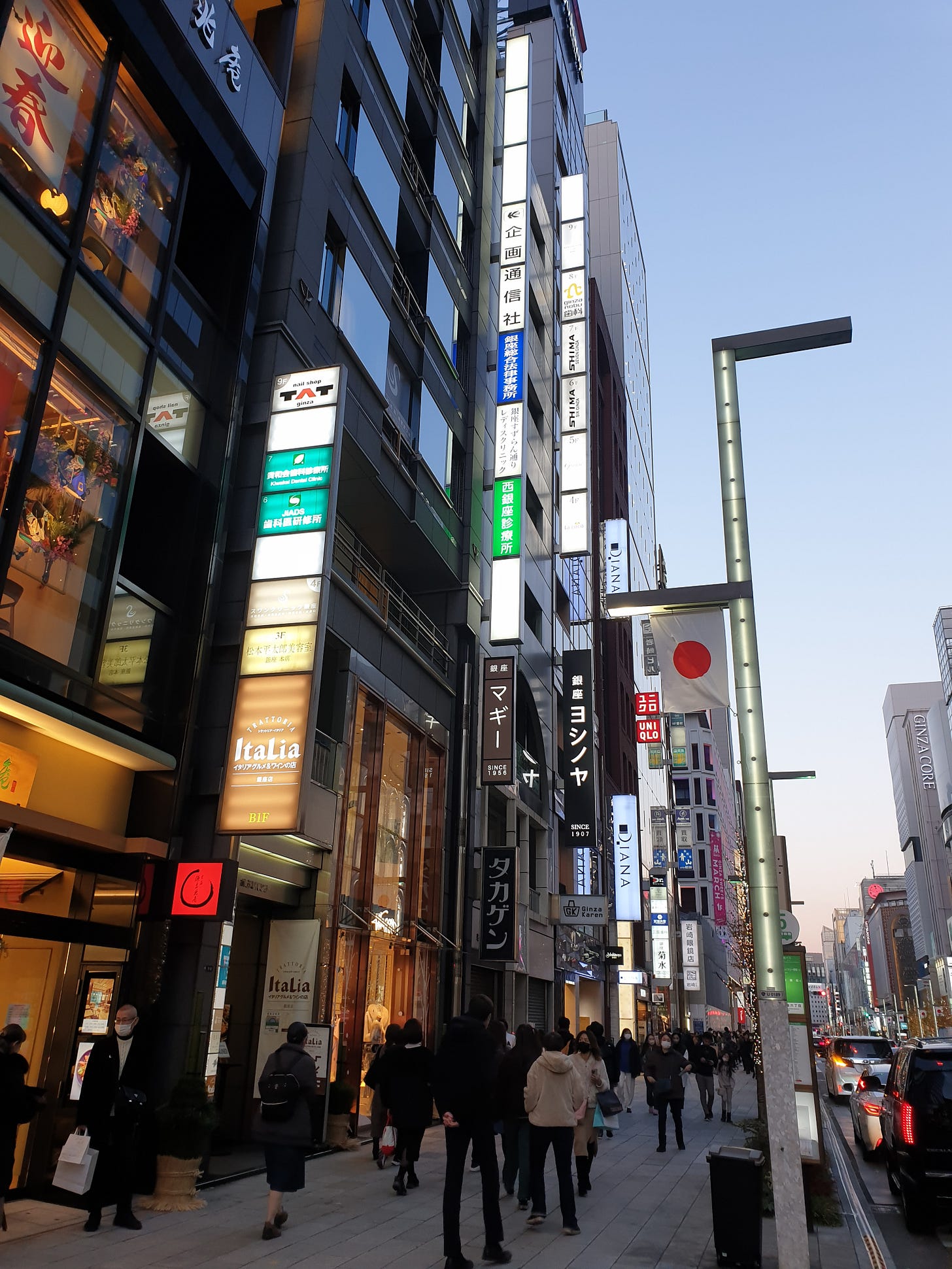With a general election looming in the UK and the Labour party committing to significant planning reforms, it seems as good a time as any to explore what those planning reforms might be able to unlock for our retail and hospitality sectors.
I’ve long been an admirer of the way the Japanese urban environment seems to combine ‘big box retail malls’ with an absolute blizzard of small independent shops (often selling just one thing, like the incense shop pictured above), restaurants and bars, and so was thrilled to read this post from Noah Smith of the Noahpinion substack about some of the ingredients that make the urban environment there so different from the US, with some clear read-across to the UK.
Digesting that, combined with some terrific discussions over the last few months with place-makers and others with an interest in the UK High Street environment, I’d suggest a set of topics that policy-makers could consider as part of a reform of the planning and wider regulatory system in the UK to make it more likely that we get the town centres most people seem to want:
Consider sacrificing economic efficiency to get higher quality of life. Almost everything in the list below is vulnerable to the criticism that “if people really wanted it, the free market would create it”. That’s sometimes true, of course, but it can also be the case that a series of individually rational decisions (I want to be able to buy things at the lowest possible price) creates an outcome where towns become soulless and something important is lost. We should consider as part of our planning policy whether we always want to chase ‘lowest cost’ as opposed to other outcomes like “happiest communities” or “local supply chains”.
Get the balance right between big box retail and small format stores. There is clear consumer demand for both, and it is notable that Japan’s historic resistance to big shops is gradually crumbling in the face of the fact the consumers want them. It is also obvious, though, to anyone who has walked the UK’s High Streets that many of them, particularly in smaller towns, have been essentially destroyed by too-rapid development of edge-of-town retail parks. If we want an outcome which protects town centres, some discussion of a policy framework on retail parks is necessary.
Have planning rules which rule things out, not in. One of the most striking visual indicators that you are in a Japanese town is the ubiquity of small specialist retailers and restaurants (the latter often specialising in a single dish) which seem to be on every corner. They are often part of people’s houses, and they are there in part because the right to operate a business from your home is pretty well established there. Zoning laws rule things out (no shop bigger than a particular size, for example, in a residential area) rather than needing to rule them in. That creates a much more diverse urban landscape where a town, rather than being a ‘doughnut’ with purely residential areas on the outside and all the commercial property on a central High Street can have small cafes and shops scattered all around, so you are never more than a 2 minute walk from one.
Find a way to involve communities in creating their local environment. As the linked article states, the Japanese model creates the danger that a noisy bar will open next to your house, and Japanese people don’t want that any more than you do. There is, however, a very local way to sort that out involving community consultation and discussion, with local authorities only a backstop last resort. The key question is how to get that kind of discussion going, though, without it becoming a Nimby’s charter to say no to everything, and that means considering:
Having a better balance between national and local regulation and decision making. It is fashionable in UK politics to regard devolving power to regions and local communities as an automatically good thing. The results, however, can be mixed. We have ended up with a planning system where a small number of objections can block an otherwise widely desired development. A stronger national framework on what is, and isn’t, to be encouraged and supported might actually unlock better local outcomes.
Have a tax system that encourages small businesses. There is no use having a planning system that encourages a load of small retail and hospitality outlets if you are then going to tax and regulate them out of existence. There are many aspects to that, and it could be a post in its own right, but a great example is Business Rates - quite apart from the complex and cack-handed way they are administered, Business Rates serve almost by definition to provide an economic advantage to edge-of-town sites and e-commerce warehouses - they are a huge dis-incentive to a thriving town centre, and whilst the current rebates are welcome, they are only a sticking plaster.
In bigger cities in particular, there is a fascinating lesson to be learned from Tokyo which is that we should encourage commercial outlets to migrate onto floors above the ground floor. The main shopping areas in Tokyo are full of buildings with one or more shops on the ground floor but with often 4 or 5 stories above with different retailers, bars and restaurants. The comparison with Oxford and Regent St in London, where there are usually only offices upstairs is striking. Using the upper floors is a big change (as consumers, we are not trained to consider going upstairs as anyone who has operated a 2 floor store can tell you) but the prize is a big one - higher commercial density, creating more reasons to visit the area and keeping these main thoroughfares vibrant and alive (and American Candy free!)
There are lots of other points which could join this list, and I’d love you to consider adding yours in the comments below.
The bottom line, though, is that there is a different outcome possible for our towns and cities. One where there are a much broader range of shops, bars, cafes and hospitality venues nearer to where you live. Where more people can walk or use public transport to get to work and to shop, eat and live. Where communities are more connected together and it is easier to serendipitously run into someone you know and harder to feel isolated.
International comparisons like the one with Japan prove that is possible. They also show, however, that it is hard to maintain - even there the model is under threat from changes in society and from the chase for productivity and growth.
There is a debate we need to have, as local communities and as a nation, about the kind of urban environments we want. I hope our politicians, nationally and locally, understand that.
If you had a hotline to those making planning rules, what would you add to the list above?






